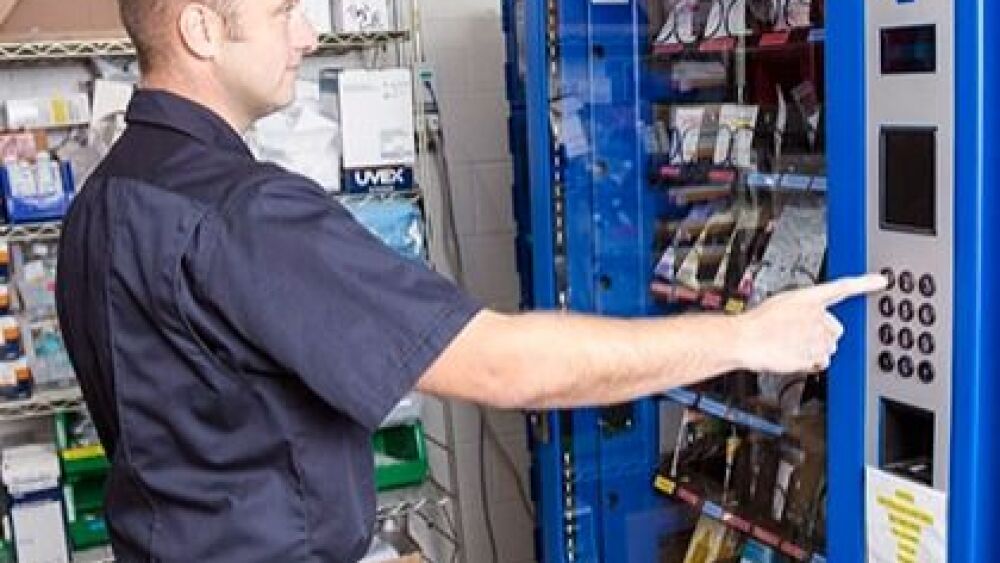Sponsored by Bound Tree Medical
By EMS1 BrandFocus Staff
Managing inventory of medicines, bandages and other supplies is a critical administrative function for EMS organizations. A recent survey by JEMS and Bound Tree Medical found that many EMS agencies lack a strategic plan or adequate tools for inventory management, which creates waste, frustration and supply shortages that can negatively affect patient care.
A panel at the American Ambulance Association conference in November (watch the recorded webcast here) presented the survey results and discussed how using technology to manage assets, from drugs to diagnostic equipment, can help eliminate waste and ensure adequate supplies, paving the way for better patient care and reduced costs.
In particular, Chief Michael Baker, director of EMS for the Tulsa Fire Department in Oklahoma and a member of the panel, shared how his organization has adopted technology to manage supply management challenges. The agency uses Operative IQ and UCapIt from Bound Tree to track and manage inventory and ensure that crews have 24/7 access to necessary supplies, in addition to saving time and reducing costs.
Add Accountability with Technology
Nearly 60 percent of EMS providers, both public and private, who responded to the survey said they struggled with expired medications. Roughly 50 percent also said that hoarding of supplies was an issue. Baker and his organization faced the same challenges.
“I have a limited supply and equipment budget, and the supply monster was just eating our operations,” Baker said. “We found, when we analyzed the system, that we had a lot of inconsistencies and weren’t compliant with state regulations.”
With the city’s support, the agency implemented Operative IQ, a web-based inventory management system that provides oversight and visibility into the use and distribution of supplies. The software tracks expiration dates in real time and can create purchase orders as needed.
Manage Expired Medication and Reduce Costs
Baker says his agency saw $25,000 savings in the first six months after implementing the program, and the system “virtually eliminated” the problem of expired meds.
“Our old system to determine what we had in the field that was going to expire was a phone tree, and now we can pull it up in real time and understand what we have to order or not,” he said.
Technology also enabled the agency to consolidate its 30 supply lockers throughout the city into five regional vending machines. The UCapIt controlled access pharmacy (or CAP) medical supply dispensing machines, which integrate with the Operative IQ software, provide climate control for increased shelf life and patient safety. Medics have 24/7/365 access, and the CAP can check multiple forms of ID.
All withdrawals are catalogued and time stamped, and the UCapIt machines track inventory use and expiration dates to report real-time data that informs supply management. Baker’s team now stocks each machine with the items most often used by EMS crews in the area, adjusting items and quantities about every two weeks according to the reported data.
Reduce Waste and Keep Track of Equipment
Waste is another critical issue. More than 60 percent of survey respondents said roughly 25 percent of their agency’s supplies are lost to waste every year. Unused, trashed or expired supplies provide no benefit, says Baker, but the accountability and tracking gained through technology creates oversight that helps cut down on waste because you know what is about to expire, what needs to be ordered and what you have in surplus.
“We didn’t know what we didn’t know,” said Baker, “By reducing the opportunity for waste, we’ve been able to reduce that to near zero.”
Additionally, some agencies have installed Wi-Fi or RFID tags on stretchers, monitors and other equipment to track use and prevent loss.
“With any piece of equipment, there are opportunities to identify what is being used and where and when, and where was it left,” using inexpensive and readily available technology, said Sean Tyler, executive vice president and COO of Fallon Ambulance Service in Massachusetts, which uses RFID tags to track its equipment.
Tyler advised panel attendees to embrace digital solutions for more effective workflows that can both reduce costs and ensure sufficient supplies for patient care. Access to real-time data increases accountability and decreases the potential for human error in the inventory management process.
MEMORABLE QUOTES
- “If you’re not measuring it, you’re not managing it.” – Jonathan D. Washko, Center for Emergency Medical Services with North Shore Health
- “The ROI associated with savings on the actual supplies is probably going to be smaller than the potential impact for labor. How much of your supervisor’s time is spent managing this that could be freed up to go do something else?” – Jonathan D. Washko
- “The logistics person in your office used to be fairly invisible. This person now has a central role, especially related to medicines and other critical and expensive pieces of equipment. We’re asking them to think ahead and develop solutions.” – James J. Augustine, U.S. Acute Care Solutions
- “The time, energy, effort and overall spend that you will save far exceeds any of the costs for the software licensure.” – Sean Tyler, Fallon Ambulance Service












